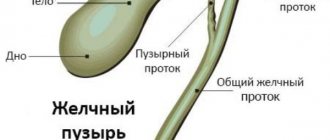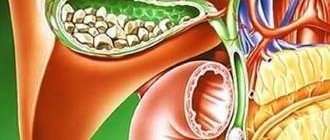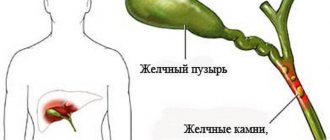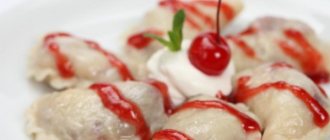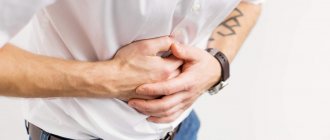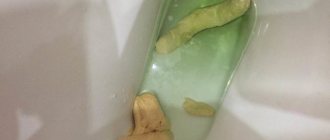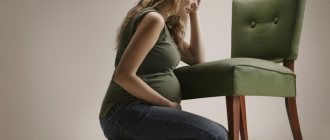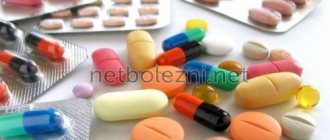Cholecystitis causes inflammation of the walls of the gallbladder. The disease has characteristic symptoms, and temperature during cholecystitis is one of the signs of the development of the pathological process. The higher its indicators, the more acute the disease. Therefore, when collecting anamnesis, the doctor must ask the patient about temperature fluctuations. Even if the fluctuations are insignificant, this fact is not ignored, since an increase in temperature means the presence of an inflammatory process in the body.
Temperature and cholecystitis
Causes of cholecystitis
Bile, produced by the liver, is involved in the digestive process. It collects in the gallbladder and is periodically expelled to facilitate digestion of food. If there is a lot of food, and it is also fatty, an increased portion of enzymes is needed to break it down, so the gall system should “work” with redoubled force. If such a load occurs rarely, the organ recovers quickly. But constant stress on the bladder can inflame it. Therefore, doctors put malnutrition as the main reason for the development of cholecystitis. The body of the bladder can become inflamed when:
- systematic consumption of high-calorie foods;
- frequent consumption of fortified or alcoholic drinks;
- irregular diet;
- endocrine diseases;
- obesity;
- hormonal imbalance;
- decreased peristalsis caused by impaired innervation of the organ;
- disruption of the blood supply to the bladder;
- helminthiasis;
- obesity;
- constant overeating.
The disease may develop as a result of other pathologies of the gastrointestinal tract (pancreatitis, gastritis, gastric ulcer), since a decrease in the enzymatic capacity of some organs of the gastrointestinal tract causes a load on others, which compensate for the lack of enzymes with their increased work. Physical inactivity and viral diseases are considered provoking factors. All of the above reasons lead to changes in the composition of bile. It becomes thick and does not come out of the bubble well. Stagnation of bile occurs, causing irritation and inflammation of the walls of the organ.
Could there be a fever?
Any inflammatory process in the body is accompanied by hyperthermia. This is how the human immune system reacts to an irritant that arises inside. Chills during cholecystitis characterize the degree of complexity of the processes occurring. The essence of the body's protective reaction is to increase the level of leukocytes and the release of pyrogens, which affect the thermoregulation center, as a result of which an increase in the threshold of body temperature is recorded. The more acute the inflammatory process, the more pyrogens are released, the more irritated the thermoregulatory center is and the higher the rates of hyperthermia.
The temperature during XX is subfibrile in nature, since the process proceeds stably, without pronounced symptoms. During the calm period, fever is not observed, and the indicators are equal to the norm. After a feast, a jump in temperature is possible, as the load on the diseased organ increases. High numbers of hyperthermia are possible if the chronic process is complicated by a gangrenous or phlegmonous (suppuration) form. In this case, fever is a symptom of the development of a critical condition. The temperature during AC reaches high limits (up to 39*), accompanied by severe chills and symptoms of general intoxication of the body.
Important! The appearance of pain and fever is a direct reason to consult a doctor.
Forms of the disease and symptoms
Cholecystitis has two types of course - acute and chronic, each of which is characterized by certain symptoms. In the first case, the disease is hidden, and the manifestations are disguised as signs of other gastrointestinal diseases:
- dyspeptic disorders;
- headache;
- malaise;
- decreased appetite;
- fast fatiguability;
- cardiopalmus;
- indigestion;
- irritability.
In addition to general symptoms, there are characteristic manifestations:
- soreness under the right rib;
- belching with bitterness;
- hyperthermia 37-37.5*.
The pain is aching, radiating to the lower back, intensifying after eating “junk food”.
The acute form of the disease is characterized by rapidly increasing symptoms. The pain is sharp, radiating to the back, shoulder blade, epigastrium. The patient suffers from nausea, accompanied by vomiting, which does not cause relief. The acute course of the disease is accompanied by an increase in temperature to 38-39*. A common cause of the disease is an exacerbation that develops on the basis of cholelithiasis. The resulting large stones can clog the bile ducts and cause severe stagnation of bile. Overfilling of the bladder leads to a severe pain attack, as the nerve endings are irritated. The situation is considered critical and requires emergency medical attention.
Symptoms of cholecystitis
Classification of the disease
Cholecystitis can take both acute and chronic forms. In this regard, not only the symptoms differ, but also the mechanism of the disorder:
- The acute form of cholecystitis is associated with the formation of gallstones: they obstruct the outflow of bile, and the addition of an infection leads to swelling of the walls of the gallbladder and severe pain.
- The chronic form develops against the background of malnutrition, but is usually not accompanied by the appearance of stones. It is easier to treat.
Chronic form
The disease develops gradually; in the first stages there are no symptoms, including diarrhea.
The longer the illness lasts, the worse the gallbladder works. There are either too many bile acids or too little, which leads to intestinal dysfunction. Loose stools with cholecystitis are combined with periodic constipation - this is a characteristic sign of the chronic form.
Feces in chronic cholecystitis are accompanied by a foul odor. May include mucus and fat.
Aggravated form
The appearance of loose stools during acute inflammation of the gallbladder is explained by the formation of stones. They not only disrupt the secretion of bile, but also cause severe, unbearable pain. The pain symptom is associated with the movement of stones or clots of mucus through the ducts.
Diarrhea is the first symptom of gallstone disease. Pain occurs when stones reach a certain size and block the ducts. After 2-3 days, yellowing of the sclera of the eyes and skin is observed, which is due to stagnation of bile.
Important! The acute form of cholecystitis causes serious complications: obstructive jaundice, peritonitis, perforation, cholangitis. It is very dangerous!
The second form of pathology
The catarrhal form of the disease is a type of acute cholecystitis. The pathological process is characterized by:
- pain;
- nausea;
- vomiting;
- symptoms of poisoning.
The pain attack is acute, radiating to the lower back, shoulder and shoulder blade, and the heart area. The pain is constant, intense, and there are signs of indigestion. On examination, the tongue is dry, covered with a white-yellow coating. The patient feels well, since the catarrhal form is the mildest manifestation of acute cholecystitis. There are no obvious symptoms of intoxication, heartbeat is within 70-80 beats per minute. Body temperature ranges from 37.0-37.3*. On palpation, the abdomen is soft, painful in the projection of the gallbladder, the gall sac cannot be felt. The symptoms of Ortner, Murphy, and Kehr are determined. That is, tapping the right rib and pressing in the area of the bladder increases the pain. During palpation, the patient abruptly interrupts his breath due to acute pain.
In the blood test, an increase in leukocytes and band cells is observed (not a significant shift). An ultrasound examination reveals an increase in the bile duct, a slight thickening of the walls with a decrease in echo density. If stones are present, their shadow is recorded. Catarrhal cholecystitis is treated with conservative methods.
Catarrhal gastrointestinal tract
What you need to know about feces?
You can judge health problems or nutritional costs by looking at four characteristics of stool:
- frequency of visiting the toilet;
- consistency and shape;
- smell;
- color.
The frequency of bowel movements is individual for each person. The norm is considered to be from twice a day to once every one or two days. Defecation should take place without significant and prolonged effort and end with complete emptying and a feeling of comfort.
Constipation occurs when the intestines cannot be emptied every three days. If a person has to go to the toilet five times a day or more, diarrhea is diagnosed.
Normal stool is soft and well-shaped (cylinder or sausage-shaped).
Trouble in the gastrointestinal tract is indicated by stool that is foamy, liquid, in the form of gruel or putty, dry and dense. For example, loose and foamy stools occur when stale food has been eaten or an intestinal infection has occurred.
Normal stool has an unpleasant fecal odor, but not a strong one. Feces with abnormal smells (sour, putrid, foul-smelling, etc.) indicate the presence of pathology. For example, feces may be foul-smelling due to problems with the pancreas or the proliferation of pathogenic bacteria in the intestines.
The normal color of stool is brown.
Spinach adds green color
Green feces occur with dysbacteriosis. Vegetables such as spinach, sorrel, and lettuce can turn feces green if consumed in large quantities.
You need to pay close attention to the color black. It can appear with ulcers, cirrhosis, and colon cancer. However, there is no need to panic in advance; feces can become black as a result of treatment with bismuth preparations or taking activated carbon. Blueberries and black currants can color stool this color.
The black-green color is observed when taking iron supplements, which are used to treat iron deficiency anemia.
Feces become reddish in color when there is bleeding in the lower intestines. A more harmless reason is the consumption of beets.
Yellow stool is most often seen when food passes through the intestines too quickly. A yellow tint gives the stool a diet primarily derived from dairy products.
The stool may take on an orange tint if a person eats a lot of carrots or pumpkin.
Finally, there is very light, almost white, with a slight gray tint. It is called acholic. The feces in this case have a clayey, putty-like consistency.
????⚕Equally important information about the causes and treatment of yellow diarrhea in adults
Stool becomes discolored due to the disruption of the process of excretion of bilirubin. It is produced by the liver and enters the intestines. There, bilirubin undergoes biochemical changes and turns into stercobilin. It is a pigment substance that makes stool brown. If there is insufficient flow of bile into the gastrointestinal tract, too little stercobilin is formed to color the stool.
Discoloration of feces occurs for three reasons:
- food;
- medications;
- gastrointestinal pathologies.
Very light coloring of the stool can result from eating a significant amount of fatty foods (lard, sour cream, butter, etc.). When the diet is normalized, the stool turns brown again.
Tetracycline can discolor stool
Some medications discolor stool:
- antibacterial and anthelmintic agents;
- anti-tuberculosis drugs;
- non-steroidal anti-inflammatory drugs;
- antiepileptic drugs;
- products based on acetylsalicylic acid;
- gout medications;
- oral contraceptives.
If these two reasons are absent, we can say that the stool has lost its natural color due to pathology. Color is lost with cholecystitis and a number of other gastrointestinal diseases.
Biliary system
The third form of pathology
Long-term catarrhal cholecystitis, especially its calculous form, can cause a phlegmonous type of pathology, which is characterized by the formation of a purulent infiltrate and damage not only to the surface of the bladder walls, but also to deeper layers. The reason for the formation of phlegmon is the obstruction of the ducts or exit from the gall sac by displaced stones, and the addition of an infectious factor to the process. As a result, the patient's condition sharply worsens, the temperature rises from 37.5 to 38.0*, the pulse quickens to 100-120 beats.
Advice! If a patient with cholecystitis still develops a fever during treatment, then you should immediately consult a doctor, since the disease is progressing.
The patient is worried about constant nausea, repeated vomiting, which does not provide relief. The pain is intense, aching, spreading to the entire right side. The tongue is dry, coated with a yellowish coating. On palpation, the abdomen in the area of the gallbladder is tense, slightly swollen, and peritoneal irritation syndrome (Shchetkin-Blumberg) is present. An enlarged bubble or the presence of infiltration is felt under the fingers.
Laboratory tests distinguish:
- in the urine - increased levels of red blood cells, white blood cells, the presence of protein and casts;
- in the blood - high levels of bilirubin.
An ultrasound examination shows a sharply increased size of the organ body, the walls are significantly compacted. The echo density of the bubble is reduced, the “double contour” symptom is present, and the formation of an infiltrate is determined. The x-ray shows right-sided lower lobe pleuropneumonia.
Treatment is surgical. The operation is carried out on an emergency basis. Its essence is to remove the inflamed organ and prevent the development of peritonitis. The main method of performing the procedure is laparoscopic cholecystectomy. The operation is performed under general anesthesia and is one of the least traumatic methods of surgical intervention.
Phlegmonous type of inflammation
Bloating with cholecystitis: treatment
To cure cholecystitis, you will first need to consult a gastroenterologist. If the patient has a chronic form of the disease, consultation with a nutritionist may be required. In general, to eliminate the problem, you will have to resort to complex treatment , which includes three components.
Diet
The first is following a certain diet. The exact regimen, daily menu and duration are indicated later in the article.
Antispasmodics
The second component of the course of treatment for gastrointestinal cholecystitis is the use of antispasmodics when severe pain occurs. The list of basic drugs includes:
- No-shpu (2 tablets per dose, up to three times a day);
- Papaverine (recommended - in suppositories, due to its greater effectiveness);
- Duspatalin (1 tablet per dose, 2 times a day, 20 minutes before meals).
Choleretic drugs
The third component of this course is choleretic drugs. Here the choice is made by the attending physician, depending on the state of motility of the biliary tract. These can be choleretics, choleretic herbs, mineral waters (it is recommended to drink them warmed up, not cold), cholekinetics, tubazhi, etc.
The fourth form of pathology
The most dangerous form of acute cholecystitis is the gangrenous form of the disease. It develops rapidly and is quite difficult to diagnose, since patients are in extremely serious condition and cannot describe their sensations. All layers of the wall of the gall sac are involved in the pathological process, necrotic areas are formed that can rupture at any time. It is the danger of bladder perforation that puts gangrenous cholecystitis among a number of critical conditions.
The patient experiences a sharp increase in symptoms of intoxication:
- lethargy;
- headache;
- vomit;
- nausea;
- tachycardia (110-120 beats per minute);
- confusion.
Pallor and dryness of the skin are visually noted. On palpation, the abdominal wall in the hypochondrium and epigastrium is tense, the abdomen is slightly swollen, so it is impossible to palpate the bubble. Due to gangrene of the gallbladder wall, the nerve receptors die off. Therefore, the pain syndrome in such patients is reduced. There is a dull, constant pain under the right rib. The temperature rises above 39.0*. In elderly and senile people, the classic picture is blurred and is not expressed by clear symptoms, which makes timely diagnosis of the disease even more difficult. Hyperthermia does not reach high numbers. If, against the background of a low temperature, the symptoms of poisoning of the body are sharply expressed, it means that total necrosis of the gallbladder has occurred.
Gangrenous form
Regardless of the extent of the necrotic area, the patient undergoes surgery during which the dead areas are removed. In case of extensive gangrene, the entire bladder is removed. Laparoscopic cholecystectomy is performed using a laparoscope and is considered the least traumatic procedure. Since all the surgeon’s movements are displayed on the monitor using a mini video camera, the doctor controls his actions and removes only damaged tissue without affecting healthy areas.
Surgery for cholecystitis
First aid for attacks of cholecystitis
An acute attack of cholecystitis is a condition requiring hospital treatment. Emergency medical and pre-hospital care are distinguished. If an attack occurs, you should try to stop it at home, take measures that can alleviate the patient’s condition and call a medical team.
- Provide rest to the patient.
- Place the patient in the most comfortable position.
- Try to calm down.
- Place a cold compress on the right hypochondrium area. You need to keep the cold for no more than 15 minutes, then take a half-hour break. If the ambulance does not arrive, the procedure can be repeated.
- To suppress nausea, give the patient a drink of mineral water without carbon or mint tea without sugar.
- During vomiting, make sure that the patient does not have a stuck tongue.
First aid for cholecystitis
In addition to mandatory manipulations, there is a list of actions that are prohibited from being performed during an attack.
- Give the patient any food.
- Place heat on your stomach.
- Rinse the stomach or give an enema.
- Give the patient alcohol.
- Give any medications, since their effect reduces the clarity of the clinical picture.
Having completed these manipulations, the patient urgently needs to be sent to a hospital, where he will receive qualified medical care.
Additional symptoms for cholecystitis
This disease is characterized not only by the appearance of white diarrhea, but also by intense pain in the right hypochondrium.
If the disease has entered an acute stage, then immediate hospitalization is necessary.
Symptoms of the disease: severe pain in the right side, the patient’s temperature rises.
The pulse becomes more frequent.
With the disease in the chronic stage, there is almost no pain, but the color of the skin and whites of the eyes change. The patient experiences bloating and stool changes color to white.
